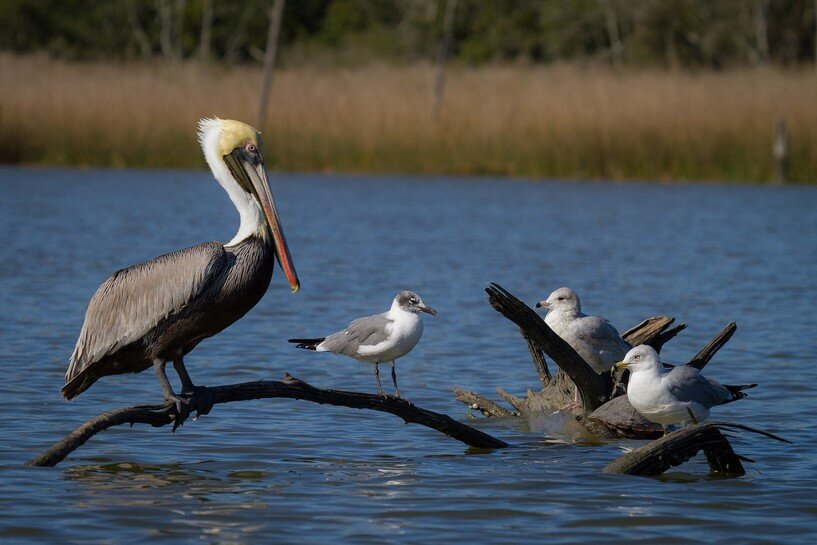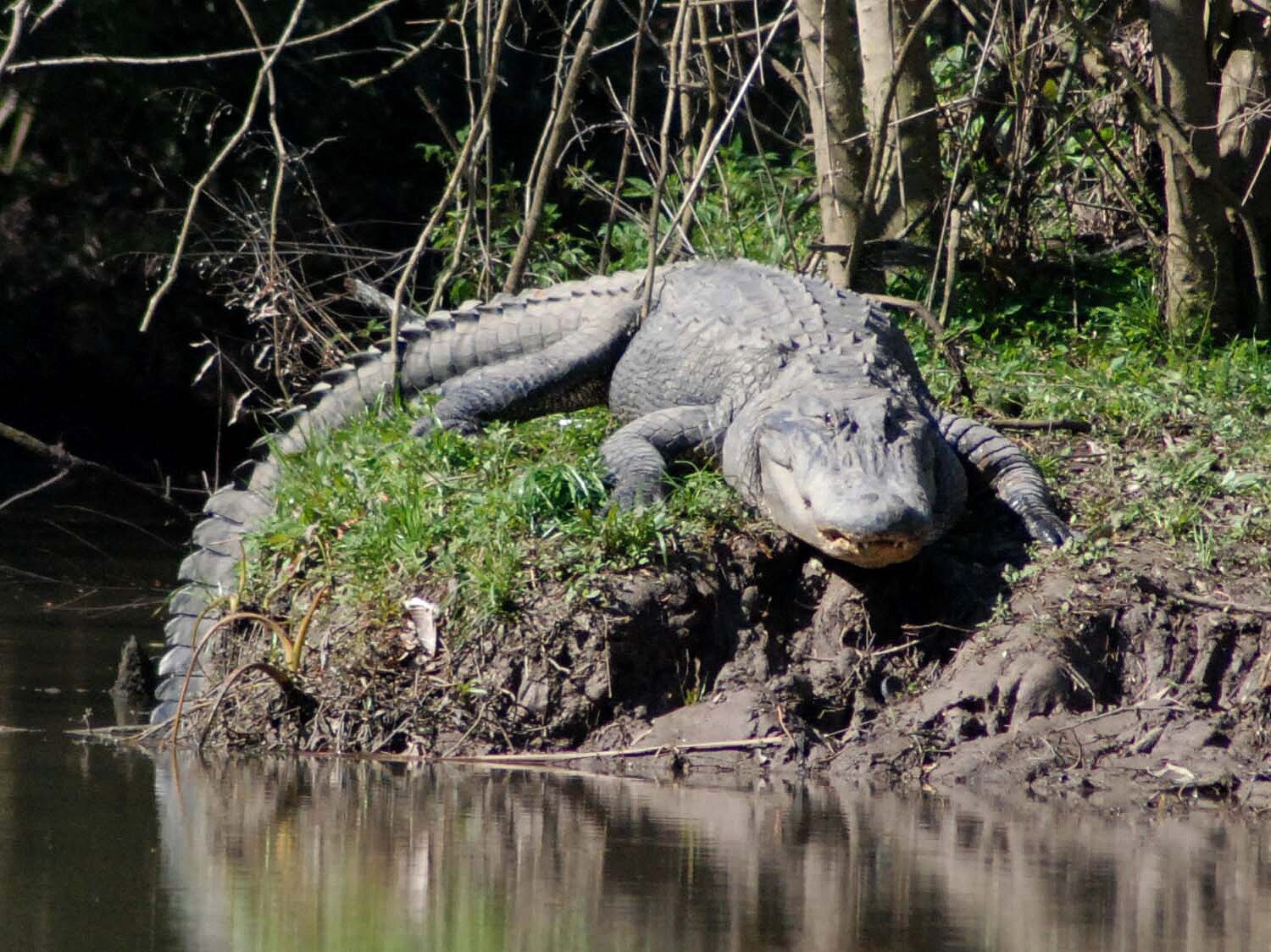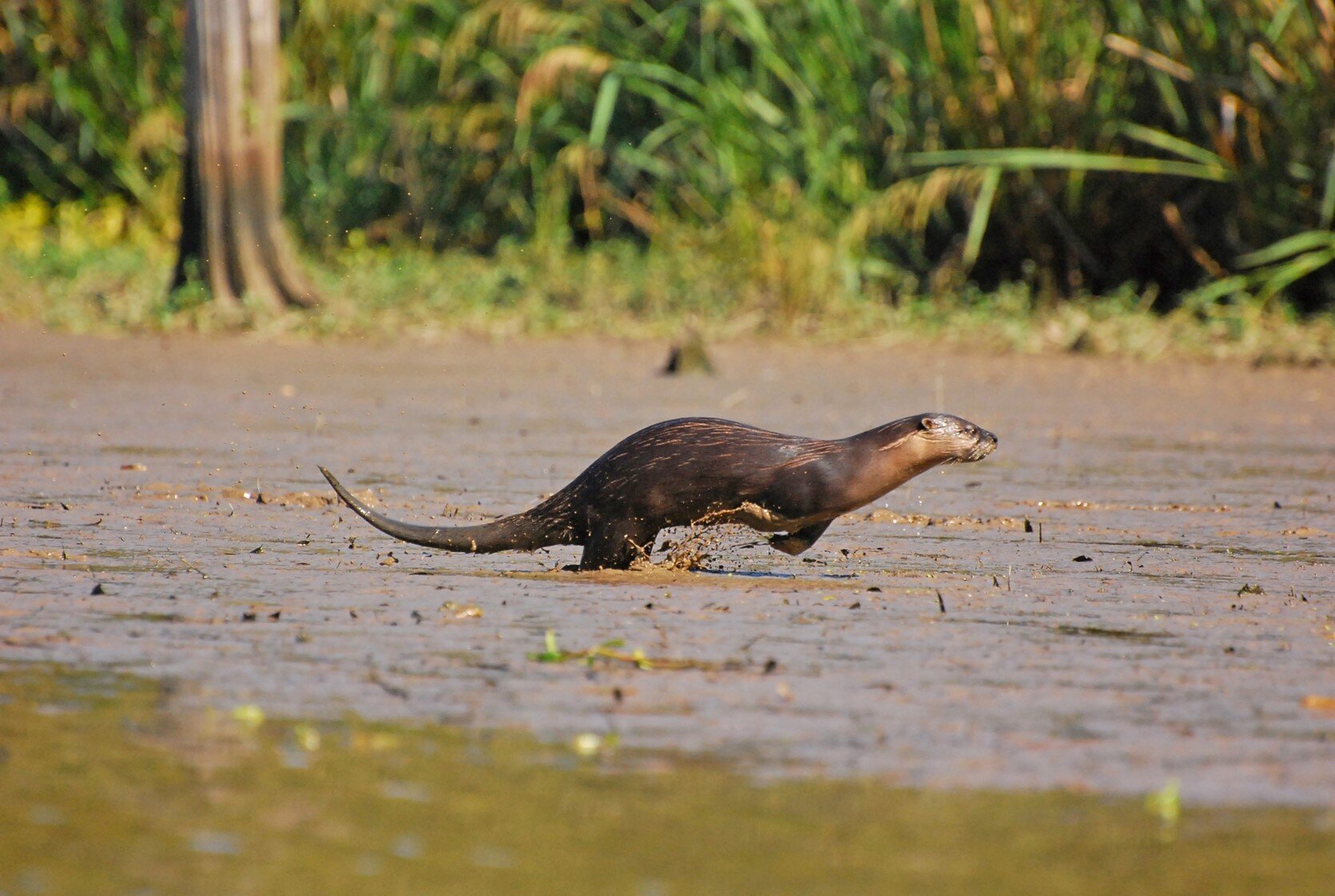Return of the Endangereds
Written by Mark Kramer
Bald Eagles were one of the first animals to be placed on the Endangered Species List. The birds remained on the List from 1969-1995. Hunting pressure in the early 1900’s followed by exposure to the damaging effects of DDT contributed to the bird’s dramatic population decline. Today, eagles have returned and have nested at ABNC since 2004 | Photo by Gary Seloff
When ABNC opened in 1974, air and water pollution were regular topics on nightly news programs. Pollution is a tangible reminder to Americans when the air and water smell. A vivid news memory in my mind is that of a river on fire. The Cuyahoga River in Cleveland, Ohio caught fire for the thirteenth time in 1969. During this time, Houston also struggled with some of the nation’s most serious air and water quality issues. Growing up in Pasadena one mile south of the Houston Ship Channel, I have personal air quality memories. In those days, my hometown was also referred to as Stinkadena. The first Fall cool front’s northerly winds were cherished in an era before air conditioning. The north winds also often brought such potent odors from The Champion Paper Mill that we would have to close the windows.
Those early memories are also filled with wonderful television programming. These were some of the first programs which exposed the beauty and fragility of the natural world to a nationwide audience. Programs from the National Geographic Society showcased the importance of preserving natural areas. The Undersea World of Jacques Cousteau brought the first images from under the sea. Think about that. Where we’ve gone in one lifetime. Cousteau (inventor of scuba diving equipment) brought the invisible nature of the ocean to many wide-eyed Americans. Today, ABNC offers activities and programs to enhance Houstonians’ eco-literacy, providing information and experiences to deepen our understanding of the environment in our own backyard.
This juxtaposition of beauty and fragility versus environmental degradation was a motivating force for action. I am proud to say that Pasadena is not often referred to as Stinkadena any longer and now is better known as home to one of the largest urban wilderness areas in the country. At the national level, some of the most visionary environmental agencies and policies were established. The Environmental Protection Agency, The Endangered Species Act, The Clean Water Act and The Clean Air Act were all created under President Richard Nixon. I think I may get a tattoo of him on my back too! These were born from a public awareness and sense of urgency of threat to the environment.
Since that time period, bay and bayou water have improved. Over those past fifty years, species that were once threatened or on the brink of extinction have recovered. Habitats under threat have been preserved. These are all testaments to federal regulations that have been and remain effective. The current regulatory rollback of environmental programs that have a proven record of success should make us question where our priorities lie.
Have you ever wondered what the Houston area looked like before humans so dramatically altered the landscape? This aerial photograph was taken roughly the year that I was born. In the blink of an eye, the Armand Bayou watershed has gone from an area with no human structures to a densely populated urban environment with over 120,000 people living inside the watershed boundaries. Today, we live in a landscape that is almost entirely man-made. Drive around Harris County and when you look out of the car window, what you see is built by man. Armand Bayou Nature Center is a living museum, an island ecosystem located in the midst of one of America’s major metropolitan areas.
Today, coastal prairies are human-dependent ecosystems and only survive where they are actively managed by people. ABNC staff mows approximately 150 acres of prairie per year. These important management practices mimic historic bison grazing effects and suppress the growth of invasive woody plants | Photo by Mark Kramer
Habitat loss is the single biggest ecological threat facing the planet. For decades, ABNC has worked to preserve and restore these remnant habitats. Coastal tallgrass prairie, un-channelized bayous and flatwoods forest are the ecological heritage of all Houstonians. Today, Armand Bayou Nature Center is a success story in habitat preservation, restoration, and long-term management. There is a list of threatened and previously endangered species which now are thriving at ABNC.
Photo by Mark Kramer
This environmental history lesson is important. It’s important as context for those who inherit an environment that is healthier now than it was a generation ago. If you were born after 1980, this could all be new information to you. Many a younger person that has ventured on to bayou waters and seen a brown pelican or American alligator doesn’t feel the sense of struggle required in order for their monumental species recovery to have taken place. Many don’t know that in the 1960’s and 1970’s there were legacy pesticides persisting in America’s waterways which were compromising bird reproductive systems. They don’t remember the unregulated hunting pressure and wetland loss that nearly drove the largest reptile in North America into extinction. There were Acts of Congress, local fund raising/preservation efforts and decades of ecological restoration required for many of these species to be thriving in the heart of the most densely populated county in Texas.
I spent much of my life fishing around Galveston Bay and never saw Brown Pelicans. The birds were listed as an Endangered Species from 1970-2009. ABNC Staff participated in the early efforts of the Brown Pelican Endangered Species Recovery Team to return the birds to the Texas in the 1970’s. My first Brown Pelican sighting on Armand Bayou occurred in 2004. Local legislation restricts power boats from entering from Clear Lake which is the third largest recreational boat community in the U.S. Today pelicans enjoy relaxing in the quiet waters of Armand Bayou | Photo by Gary Seloff
The American Alligator was also one of the early species placed on the Endangered Species List in 1967. Hunting pressure and habitat loss contributed to alligators’ dramatic population decline. They were largely absent from Armand Bayou for several decades. They were removed from the Endangered Species List in 1987, and today, are commonly sighted in bayou waters | Photo by Ann Brinly
Only a few species have fought their way back after being listed. I noticed the first return of alligators to Armand Bayou while offering eco-tours from the Hana G Pontoon Boat in 1984 | Photo by Mark Kramer
It is a unique perspective to observe the ecological change as four decades have passed on Armand Bayou. Air and water quality have improved, grasslands and wetlands have been restored and rare species have returned after a lengthy absence. Their return serves as a significant biological indicator of species recovery and ecological restoration success | Photo by Ann Brinly
We don’t inherit the earth from our ancestors, we borrow it from our children | Photo from ABNC File Footage









